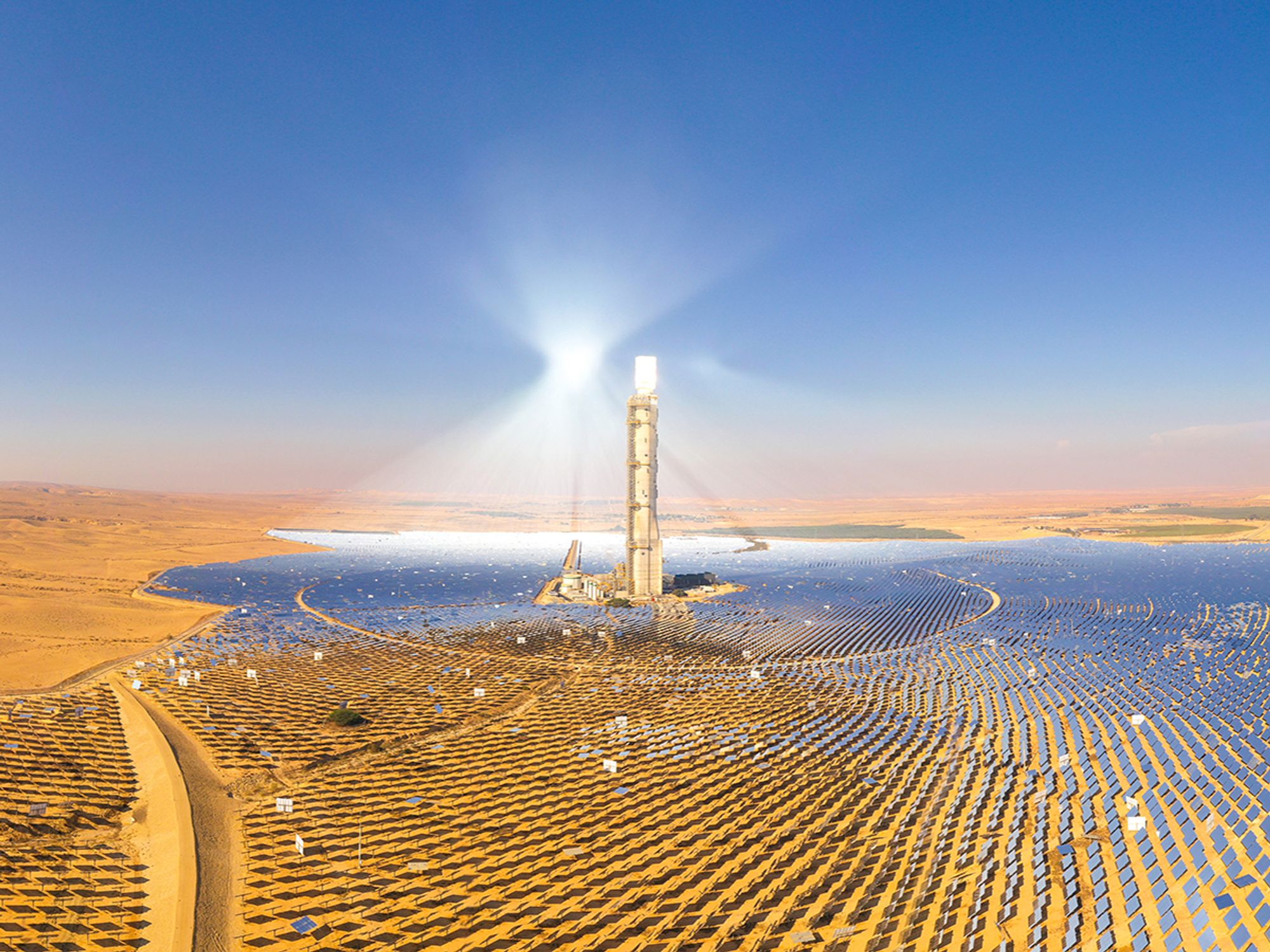Concentrating

- CSP technologies may be used to make electricity by turning energy from the sun into power for a turbine.
- CSP technology uses three technological approaches: trough systems, power tower systems, and dish/engine systems.
Concentrating solar-thermal power (CSP) technologies may be used to make electricity by turning energy from the sun into power for a turbine. The same simple technologies can also be used to bring heat to a wide array of industrial applications, such as water desalination, better oil recovery, food processing, chemical manufacturing, and mineral processing.
CSP plants make electric power by using mirrors to focus energy from the sun and change it into high-temperature heat. That high-temperature heat is then directed through a conventional generator. The plants have two parts:
- One that gathers solar energy and changes it to heat, and
- Another that changes the heat to electricity.
CSP technology uses three technological approaches:
- Trough systems,
- Power tower systems, and
- Dish/engine systems.
Trough systems use huge, U-shaped focusing mirrors that have oil-filled pipes running along their center. The mirrors are tilted toward the direction of the sun. They focus sunlight on the pipes to heat the inside oil to as high as 750°F. Then, the hot oil is used to boil water. This produces steam to power conventional steam turbines and generators.
Power tower systems use many big, flat mirrors to track the location of the sun and focus its rays onto a receiver. The receiver sits on a tall tower, here concentrated sunlight heats a fluid as hot as 1,050°F. The hot fluid can be used right away to create steam for electricity generation or stored for use later. So, electricity can be made during periods of high need on cloudy days or even a few hours after sunset.
Dish/engine systems use mirrored dishes to focus sunlight onto a receiver. The receiver is fixed at the focal point of the dish. To get the greatest quantity of solar energy, the dish assembly tracks the sun. The receiver is combined with a high-efficiency combustion engine. The engine has narrow tubes with hydrogen or helium gas that go along the exterior of the engine’s four piston cylinders and open into those cylinders. As sunlight falls on the receiver, it heats the gas in the tubes to great temperatures. This results in hot gas expanding in the cylinders. The expanding gas drives the pistons, which rotate a crankshaft, which then drives an electric generator. The receiver, engine, and generator are one integrated assembly fixed at the focus of the mirrored dish.
